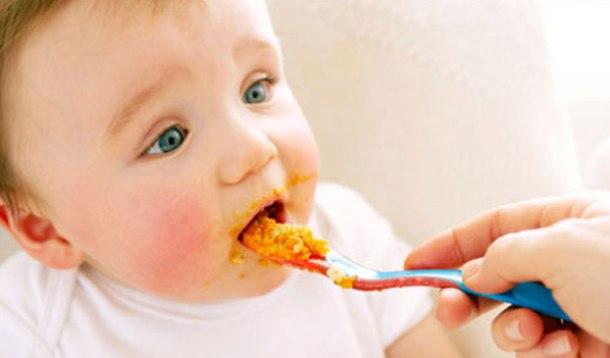
Arsenic in rice products is a concern not only for adults, but for babies as well. In this article published in the Globe and Mail, the facts are laid out: “There’s a growing body of evidence that even relatively low levels of exposure may have adverse health impacts on young children including on growth, immunity and neurodevelopment.”
For those of you who may not know, recent studies have detected high levels of arsenic in rice. This is a major concern as rice is a staple food across the world and here in North America, a staple first food for our babies. P.S. ARSENIC IS POISON.
So what do we do as parents when rice is such a fantastic food for babies learning to eat? It’s easy to digest, easy to make, and inexpensive.
As a Holistic Nutritionist, my recommendation is to moderate consumption of rice products. If you can’t sleep at night thinking your baby is ingesting trace amounts of arsenic, take it out of their diet altogether. You can re-introduce it later if you change your mind. Remember the big scary facts about mercury in our fish? Do you still eat fish?
If a tablespoon every now and again is ok with you (of rice, not arsenic), than go ahead and give some to your baby. Certain rice seem to contain lesser amounts of arsenic, but they are all exposed to it. And do not believe because you are buying organic rice, it’s safe. Organic rice is grown in the same earth and can contain the same levels. Just remember, rice is not only in rice cereal. It can also be found in baby crackers, puffs, other cereals, cookies, syrups, flour, rice milk and more. Check your labels.
There are ways to lower the amount of arsenic in your rice, but it will not take it out completely. Rinse your rice or soak it for many hours, or even overnight. Plus, cook it in a lot of water, like you would pasta, instead of letting the rice absorb all the water. You will lower the nutrients in your rice, but also the arsenic, possibly by more than 50%. Drain and let sit, than serve. If you’re making food for your baby, you can blend this rice and add water or milk at this point to make a palatable cereal.
There are some wonderful alternatives that you can feed your baby that are also easy on the tummy, as well as gluten-free. Millet, buckwheat, quinoa, and oats are excellent additions to your baby’s first foods and can be eaten without as many concerns of low level poisons.
If you give your baby a couple spoonfuls of rice cereal or homemade ground rice, try to avoid all the other convenience rice products where you don’t have control over how it was processed. Try your best to stick to whole, real fruit and vegetables for your babies and not depend on the packaged and processed foods as much as possible. If you do buy these foods, read your labels and try to switch things up and buy different grains. You’ll be happy and so will your baby’s belly.
The science is still out on this one for the long term, but we all want our babies to grow up strong and healthy. As parents, we do our best with the information we have! Do what is best for you and your baby.
![]() RELATED: See What a Nutritionist's Kids Make for a "Healthy" Meal
RELATED: See What a Nutritionist's Kids Make for a "Healthy" Meal